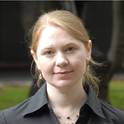Article
GFP Reconstitution Across Synaptic Partners (GRASP) defines cell contacts and synapses in living nervous systems
Neuron
(2008)
Abstract
The identification of synaptic partners is challenging in dense nerve bundles, where many processes occupy regions beneath the resolution of conventional light microscopy. To address this difficulty, we have developed GRASP, a system to label membrane contacts and synapses between two cells in living animals. Two complementary fragments of GFP are expressed on different cells, tethered to extracellular domains of transmembrane carrier proteins. When the complementary GFP fragments are fused to ubiquitous transmembrane proteins, GFP fluorescence appears uniformly along membrane contacts between the two cells. When one or both GFP fragments are fused to synaptic transmembrane proteins, GFP fluorescence is tightly localized to synapses. GRASP marks known synaptic contacts in C. elegans, correctly identifies changes in mutants with altered synaptic specificity, and can uncover new information about synaptic locations as confirmed by electron microscopy. GRASP may prove particularly useful for defining connectivity in complex nervous systems.
Disciplines
Publication Date
February 7, 2008
Publisher Statement
SJSU users: use the following link to login and access the article via SJSU databases
Citation Information
E H Feinberg, Miri VanHoven, A Bendesky, G Wang, et al.. "GFP Reconstitution Across Synaptic Partners (GRASP) defines cell contacts and synapses in living nervous systems" Neuron Vol. 57 Iss. 3 (2008) Available at: http://works.bepress.com/miri_vanhoven/4/
